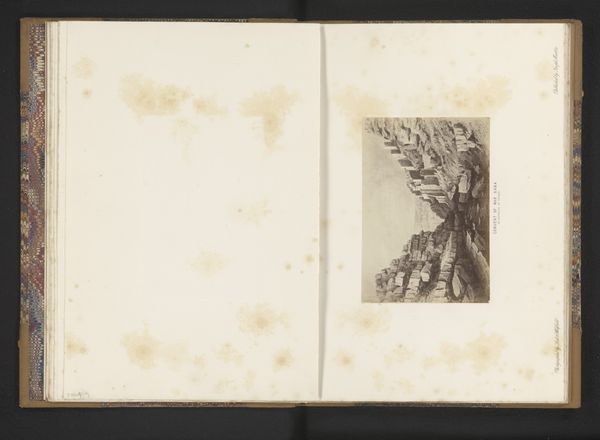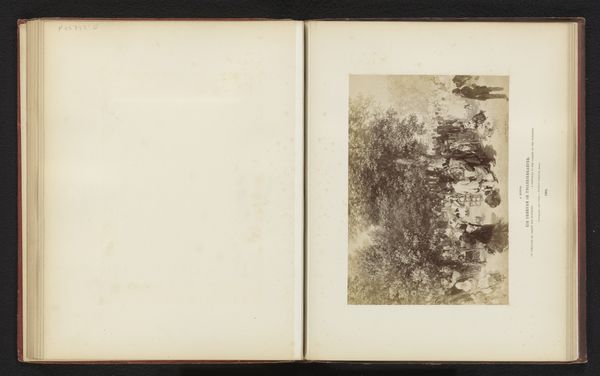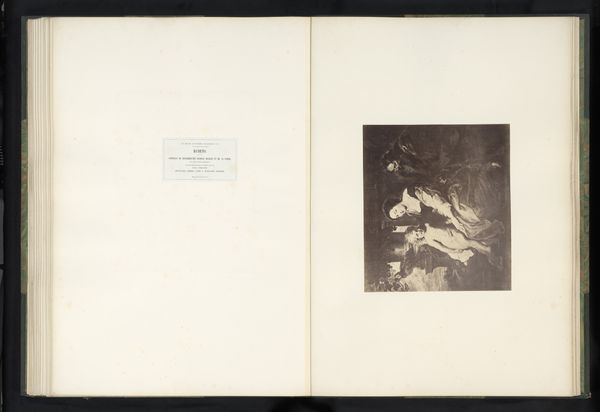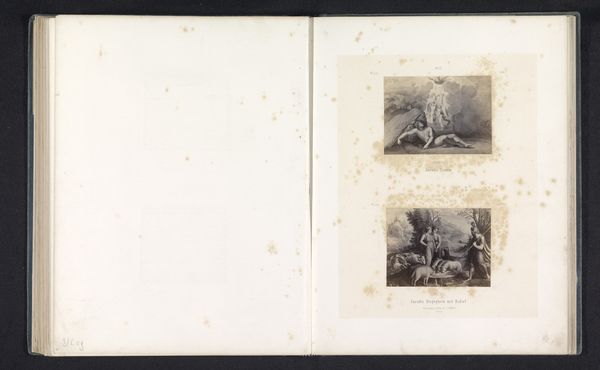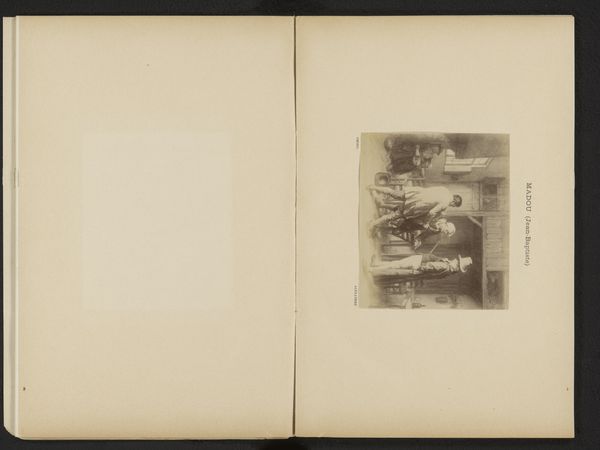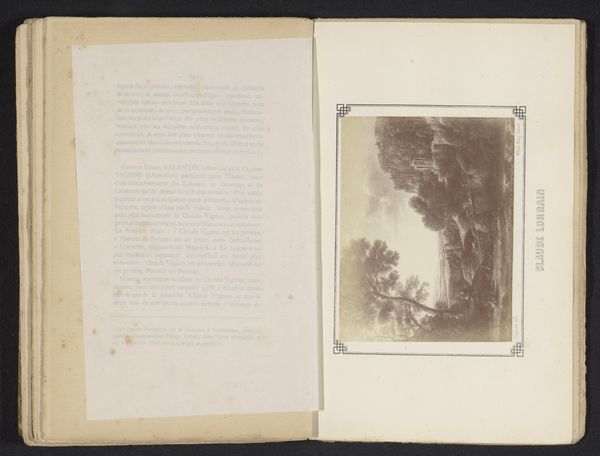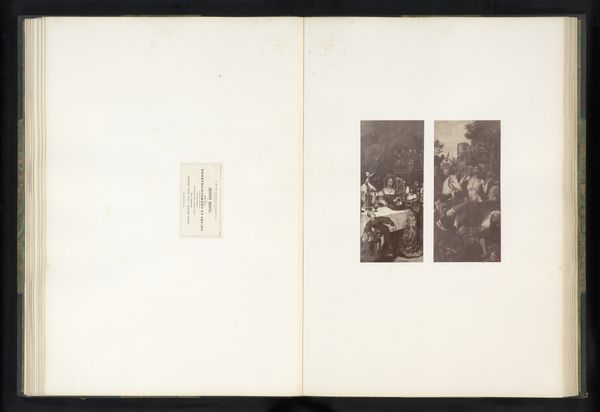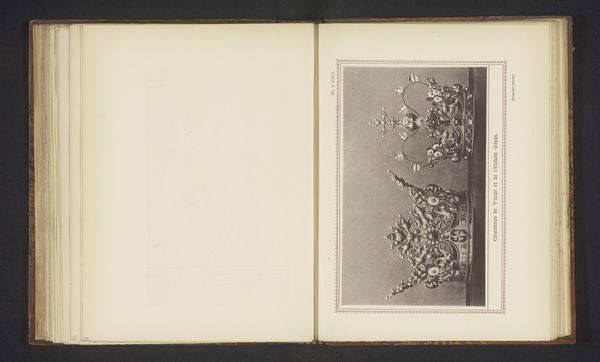
Fotoreproductie van het schilderij The Death of Major Peirson, 6 January 1781 door John Singleton Copley before 1881
0:00
0:00
print, etching, photography
#
portrait
#
narrative-art
# print
#
etching
#
photography
#
history-painting
#
academic-art
Dimensions: height 97 mm, width 139 mm
Copyright: Rijks Museum: Open Domain
Editor: This is a photographic reproduction, predating 1881, of John Singleton Copley's painting "The Death of Major Peirson, 6 January 1781," presented as an etching in what appears to be an album. I’m struck by how this reproduction flattens the original, monumental oil painting into a grayscale image. What does the shift in medium and scale tell us? Curator: It tells us a great deal about access and dissemination in the pre-digital age. Think about the labor involved in creating both the original painting and this reproductive print. Copley, of course, was aiming at history painting, a prestigious genre demanding extensive resources, from pigments to models. This reproductive print, made using photography and etching, becomes a commodity. Consider the skilled labor of the etcher; How does their work mediate our understanding of Copley’s original vision? Editor: So, the etching democratizes the image but also filters it through another set of skills and materials. It is like a copy of a copy. Curator: Precisely. The reproduction transforms the artwork. It’s removed from the unique, handmade object to something that can be mass-produced. What do you think that shift does to its value as a historical artifact or a work of art? What kind of consumer would seek out this photograph? Editor: I suppose this allows a wider audience to engage with a significant historical moment, although removed from the scale and grandeur of the original. Someone who may not have access to galleries, would have bought it to collect historical images. I had never considered the commodification of history this way before. Thanks for clarifying this! Curator: Exactly. And hopefully, you'll start to notice that labor, consumption, and accessibility underpin our understanding of this historical work.
Comments
No comments
Be the first to comment and join the conversation on the ultimate creative platform.


